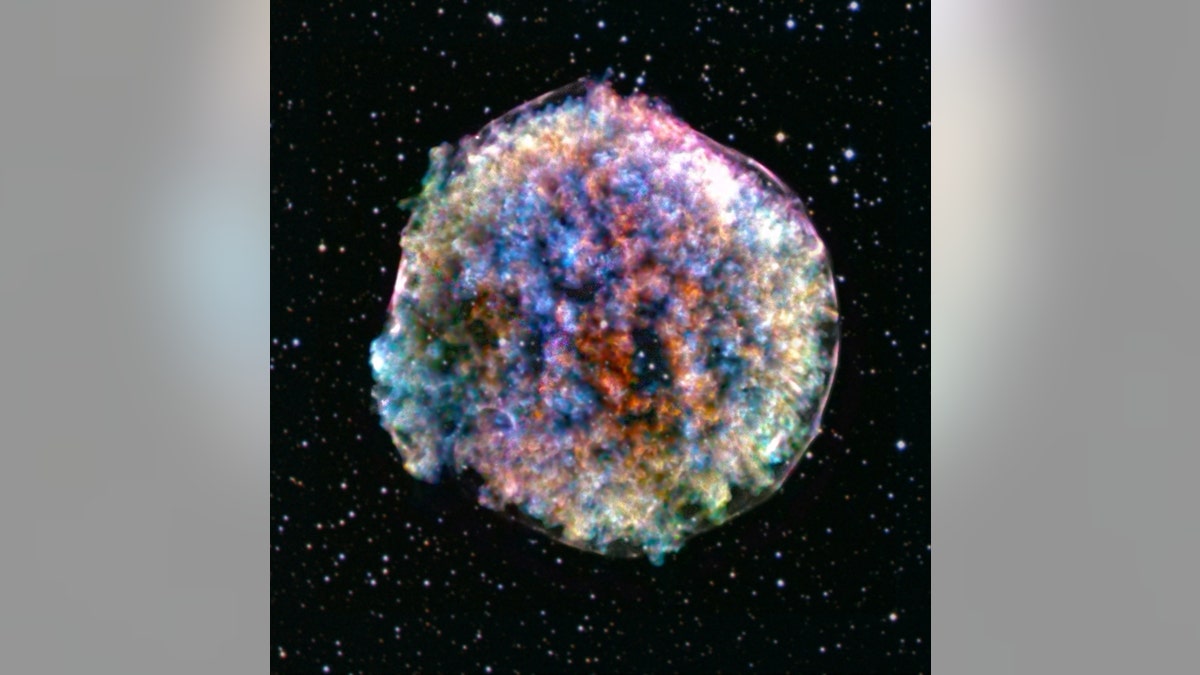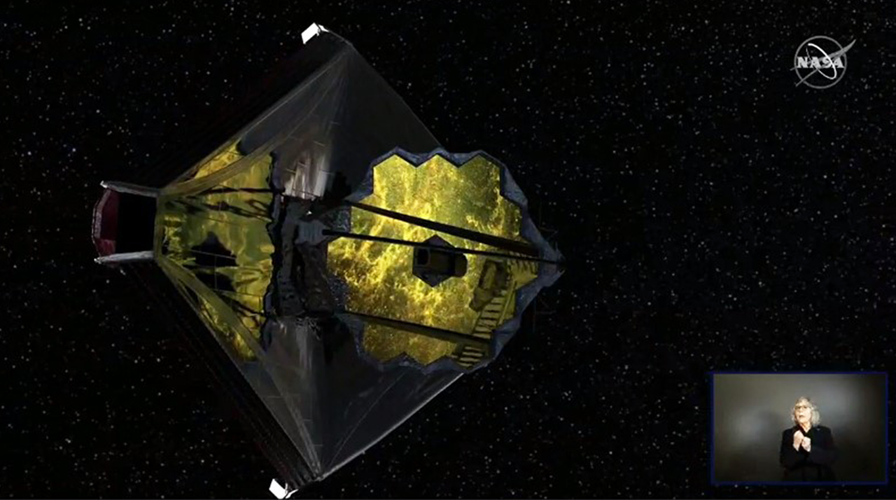NASA explains first full-color images from the Webb telescope
NASA explains first full-color images from the Webb telescope: A never-before-seen view of the universe.
International scientists have uncovered new clues about the supernova remnant called Tycho.
The findings shed light on how conditions in the shock waves caused by titantic stellar explosions – known as supernovae – accelerate particles to near the speed of light.
Astronomers used NASA's Imaging X-ray Polarimetry Explorer to look at polarized X-rays from the Tycho supernova remnant. NASA said the star's explosion was discovered 450 years ago.
For the first time, IXPE revealed the geometry to the magnetic fields close to the shock wave, which is still propagating from the initial explosion and forms a boundary around the ejected material.
ROCKET LAUNCH FAILURE LIKELY CAUSED BY FAULTY PART FROM UKRAINE

Using data from NASA’s Imaging X-ray Polarimetry Explorer (IXPE), international researchers have uncovered new information about the Tycho supernova remnant, an exploded star in the constellation Cassiopeia, the light from which was first seen on Earth in 1572. The results offer new clues about how shock waves created by these titanic stellar explosions accelerate particles to nearly the speed of light, and reveal, for the first time, the geometry of the magnetic fields close to the supernova’s blast wave, which forms a boundary around the ejected material, as seen in this composite image. IXPE data (dark purple and white) have been combined with data from NASA’s Chandra X-ray Observatory (red and blue) and overlaid with the stars in the field of view as captured by the Digitized Sky Survey. (Credits: X-ray (IXPE: NASA/ASI/MSFC/INAF/R. Ferrazzoli, et al.), (Chandra: NASA/CXC/RIKEN & GSFC/T. Sato et al.) Optical: DSS Image processing: NASA/CXC/SAO/K. Arcand, L.Frattare & N.Wolk)
By measuring X-ray polarization, the authors of a study published in The Astrophysical journal can determine the average direction and ordering of the magnetic field of light ways that make up X-rays from a high-energy source like the remnant.
The polarized X-rays are produced in a process called synchrotron emission, and the polarization direction from the X-rays can be mapped back to the direction of the magnetic fields at the location where the X-rays were generated.

Artist rendering of the Chandra X-ray Observatory space telescope, created on May 19, 2021. The planet Uranus is visible in the background. ((Illustration by Nicholas Forder/Future Publishing via Getty Images))
NEIL DEGRASSE TYSON SAYS JAMES WEBB SPACE TELESCOPE IS WINDOW TO UNIVERSE 'NEVER BEFORE ACHIEVED'
Building on groundwork laid by NASA's Chandra X-ray Observatory, IXPE allows scientists to better understand the process in which cosmic rays – highly energetic particles – are accelerated by supernova remnants. It helped map the shape of Tycho's magnetic field, measuring it on scales smaller than one parsec.

In 1572, Danish astronomer Tycho Brahe was among those who noticed a new bright object in the constellation Cassiopeia. Adding fuel to the intellectual fire that Copernicus started, Tycho showed this "new star" was far beyond the moon, and that it was possible for the universe beyond the sun and planets to change. (Image Credit: X-ray: NASA/CXC/RIKEN & GSFC/T. Sato et al; Optical: DSS)
It's the closest researchers have ever come to observing the source of the cosmic rays emitted by one of these distant phenomena.
The supernova's namesake, Danish astronomer Tycho Brahe noticed the "star" in the constellation Cassiopeia in 1572.
CLICK HERE TO GET THE FOX NEWS APP
The Tycho supernova is classified as a Type Ia, which occurs when a white dwarf star in a binary system shreds its companion star, capturing some of its mass and leading to a violent explosion.


